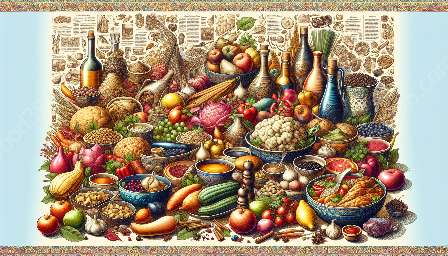In this detailed exploration, we will delve into the intricate relationship between historical geopolitical boundaries and the unique food cultures that have emerged as a result. By understanding the influence of geography on food culture and examining the origin and evolution of food culture, we can appreciate the rich tapestry of flavors and traditions that have been shaped by centuries of political and geographical changes.
The Influence of Geography on Food Culture
Geography plays a pivotal role in shaping food culture. The availability of natural resources, such as fertile soil, water sources, and diverse landscapes, has a profound impact on the types of crops that can be cultivated and the animals that can be raised. Additionally, proximity to oceans, rivers, and other bodies of water influences the availability of seafood and the development of fishing practices.
Furthermore, climate and weather patterns dictate the seasonal availability of certain ingredients, which in turn affects the culinary traditions and dietary practices of a region. In mountainous areas, for example, preservation methods like curing and smoking have historically been crucial for food storage and have thus become integral to the local cuisine. The physical layout of a region also influences trade routes, which can introduce new ingredients and cooking techniques, further enriching the local food culture.
Origin and Evolution of Food Culture
The origin and evolution of food culture are deeply intertwined with historical geopolitical developments. Throughout history, the rise and fall of empires, the formation of nation-states, and the delineation of borders have all played a significant role in shaping food cultures.
These geopolitical shifts often led to the exchange of culinary techniques, ingredients, and recipes across different regions. For instance, the Silk Road facilitated the spread of spices, grains, and cooking methods between East and West, resulting in the fusion of culinary traditions. Similarly, the Columbian Exchange brought foods like tomatoes, potatoes, and chocolate to Europe, forever transforming European cuisine.
Moreover, the colonization of territories by European powers led to the introduction of new crops and animals in conquered lands, which significantly impacted local food cultures. This global interchange of foodstuffs and culinary knowledge has created the diverse and vibrant food cultures we see today.
Historical Geopolitical Boundaries and Their Impact on Food Culture
As historical geopolitical boundaries have shifted over time, they have had a profound impact on food cultures. The demarcation of borders has often resulted in the separation of communities that once shared culinary traditions, leading to the development of distinct regional cuisines.
Furthermore, political divisions have sometimes disrupted the natural flow of ingredients and culinary practices. For example, a geopolitical boundary may cut through a region known for producing a specific ingredient, creating challenges for its distribution and impacting the local food culture. Conversely, political alliances and trade agreements have facilitated the exchange of culinary knowledge and ingredients across borders, enriching food cultures and fostering culinary diversity.
Historical events, such as wars, migrations, and the establishment of trade routes, have also influenced food culture in profound ways. The movement of people and the blending of cultural identities have resulted in the adaptation and integration of new ingredients and cooking techniques, thereby shaping unique hybrid food cultures.
Conclusion
Understanding the impact of historical geopolitical boundaries on food culture illuminates the complex interplay between politics, geography, and culinary traditions. By recognizing the influence of geography on food culture and tracing the origin and evolution of food culture, we can gain a deeper appreciation for the diversity and richness of global culinary heritage. Through this exploration, we celebrate the enduring legacy of historical geopolitical boundaries and their indelible mark on the world's food cultures.


